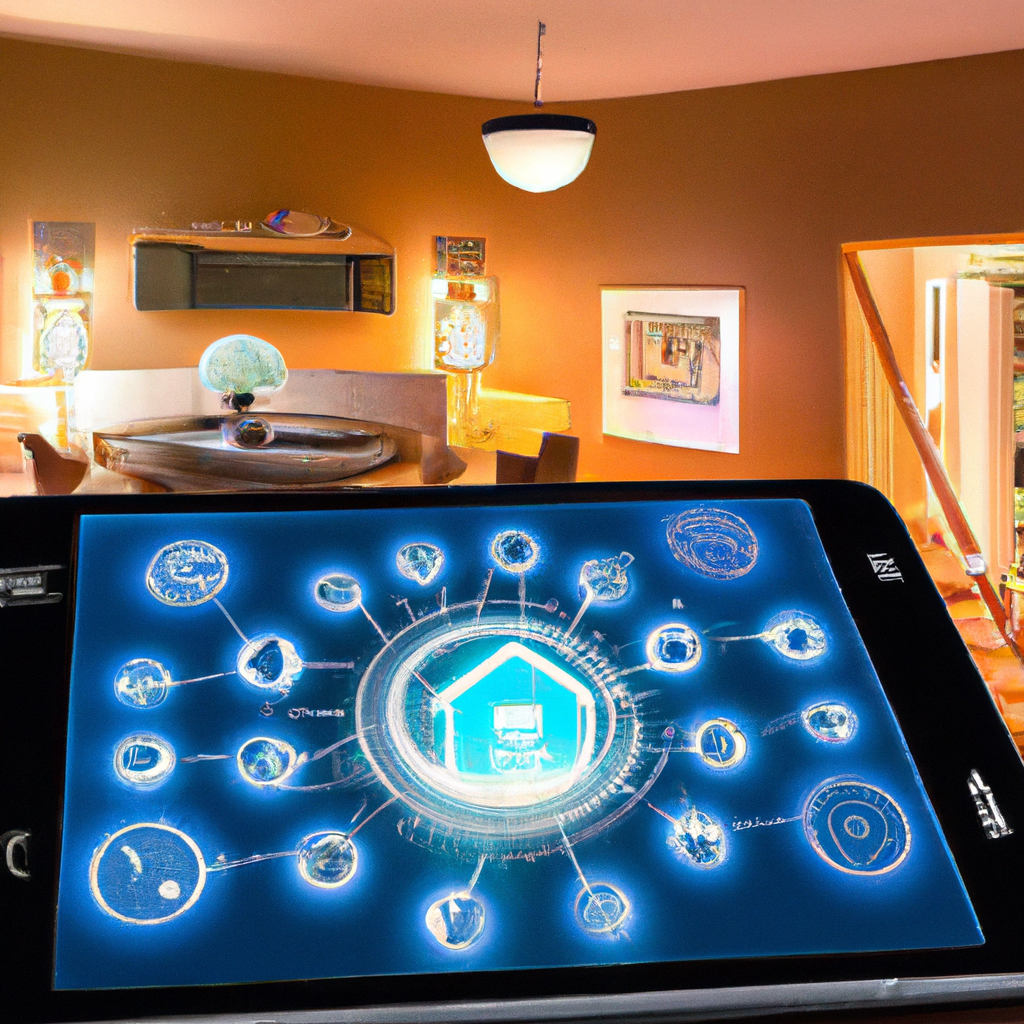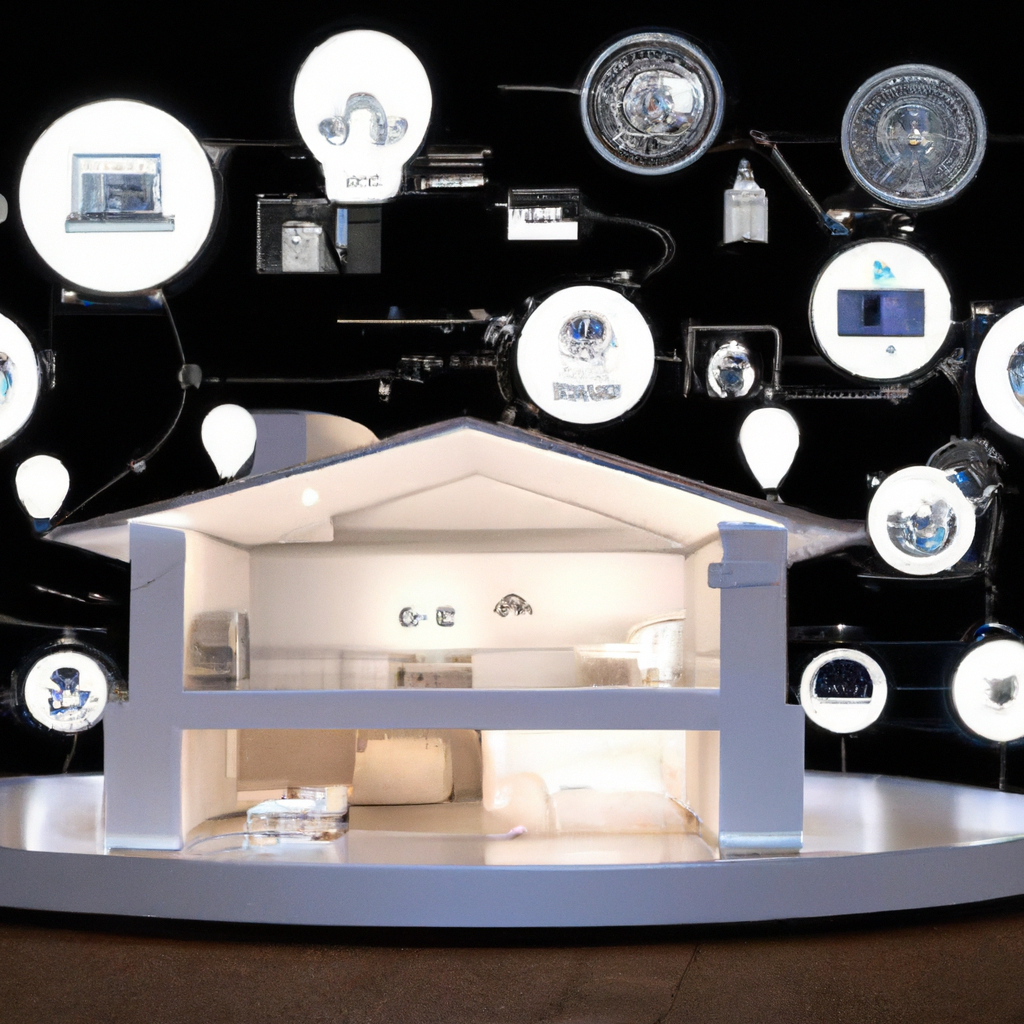Imagine living in a home that recognizes your voice and can adjust the lighting, temperature, and music with just a simple command. Picture a house that ensures your security by remotely locking doors and monitoring your property while you’re away. These futuristic features, made possible by cutting-edge technology, are just a few reasons why smart homes have become increasingly popular among homeowners. With the ability to enhance convenience, comfort, and efficiency, it’s no wonder that more and more people are opting for these intelligent dwellings. In this article, we will explore the fascinating world of smart homes and uncover the key factors driving their growing popularity.
Convenience and Control
Smart homes offer an unprecedented level of convenience and control over various aspects of your home. With remote access and control, you can manage your home’s different systems and features from anywhere in the world. Whether you want to adjust the thermostat, turn off lights, or lock the doors, you can easily do it with the touch of a button on your smartphone or through a dedicated smart home app.
Automation and scheduling feature of smart homes further enhance convenience. With the ability to pre-set schedules for different tasks, your home can take care of routine actions automatically. For example, you can program your home to turn off all the lights and lower the thermostat when you leave for work in the morning. This eliminates the need for manual intervention and ensures that your home is always running efficiently.
Voice control is another exciting feature of smart homes that offers a new level of convenience. With voice assistants like Amazon Alexa or Google Assistant, you can simply use your voice to command your home. Whether it’s dimming the lights, playing your favorite music, or adjusting the temperature, you can accomplish all these tasks effortlessly, leaving your hands free to focus on other activities.
Energy Efficiency and Cost Savings
One of the biggest advantages of smart homes is their ability to improve energy efficiency, leading to cost savings in the long run. Smart thermostats, for instance, help optimize your home’s heating and cooling by learning your habits and adjusting the temperature accordingly. They can also detect when you’re away from home and adjust the temperature to save energy.
Energy monitoring and management systems allow you to track and analyze your energy usage, providing valuable insights into where you can make changes to reduce consumption. By identifying energy-hungry appliances or inefficient usage patterns, you can make informed decisions and take steps to conserve energy. This not only benefits the environment but also helps lower your utility bills.
Optimized lighting and appliances are other ways smart homes contribute to energy efficiency. You can use smart lighting systems that offer dimming capabilities and motion sensors to ensure lights are only on when needed. Smart appliances, such as refrigerators or washing machines, can optimize their operation based on energy usage patterns, thereby reducing waste and saving you money in the long term.

Enhanced Security
Smart homes provide enhanced security features that help protect your property and give you peace of mind. Smart locks and doorbells allow you to control access to your home remotely. You can lock or unlock your doors using your smartphone or set up temporary access codes for guests, eliminating the need for physical keys.
Surveillance and monitoring systems integrated into smart homes offer real-time video feeds and alerts, allowing you to keep an eye on your property at all times. Whether you’re at work or on vacation, you can access live video footage from security cameras and receive notifications if any unusual activity is detected.
Integration with home security systems further enhances the security of your smart home. By connecting your smart home devices to a comprehensive security system, you can create a seamless network that allows you to monitor and control all aspects of your home’s security from a single interface. This includes features like motion detectors, window sensors, and alarm systems.
Improved Safety
Smart homes prioritize the safety of their occupants by offering advanced detection and prevention systems. Fire and carbon monoxide detection devices are key components of a smart home’s safety features. Equipped with sensors, these devices can detect the presence of smoke or dangerous levels of carbon monoxide and immediately alert you through alarms or notifications on your phone.
Leak detection and prevention systems are also essential for protecting your home from water damage. Smart sensors placed near potential leakage points such as faucets or water heaters can detect the presence of water and alert you before a major incident occurs. This allows you to take immediate action and prevent excessive damage.
In cases of emergencies, smart homes can provide valuable assistance. Integrated emergency assistance features enable homeowners to quickly reach emergency services with a single voice command or a tap on their smartphone. This can be crucial in situations where every second counts, such as medical emergencies or intrusions.

Entertainment and Media
Smart homes offer a whole new level of entertainment and media experience. Smart televisions and audio systems bring your favorite content to life with features like voice control, intuitive interfaces, and seamless integration with streaming services. You can easily switch between apps, control volume, and search for your favorite shows, movies, or songs using only your voice.
Seamless media streaming is another benefit of smart homes. With the integration of streaming devices like Chromecast or Apple TV, you can effortlessly stream content from your phone or computer directly to your TV or speakers. This eliminates the need for complicated cables or remote controls, making your media experience seamless and enjoyable.
For those who crave a true cinematic experience, smart homes offer intuitive home theaters. With the integration of projectors, surround sound systems, and smart lighting, you can recreate a movie theater ambiance right in the comfort of your own home. Smart controls allow you to dim the lights, adjust the volume, and start your favorite movie with just a few taps on your smartphone.
Health and Well-being
Smart homes have the potential to significantly improve the health and well-being of their occupants. For the elderly and disabled, smart homes offer assistance and independence. With features like voice control, automated routines, and remote access, daily tasks become more manageable, reducing the reliance on caregivers. This promotes a sense of autonomy and enhances the overall quality of life.
Sleep monitoring and optimization features help individuals achieve better sleep patterns. Smart beds, mattresses, and sensors can track your sleep cycles, heart rate, and even ambient conditions in your bedroom. Based on this information, they can provide personalized recommendations for optimizing your sleep, such as adjusting room temperature or humidity.
A healthy living environment is another benefit smart homes provide. Smart home devices can monitor and control indoor air quality, temperature, and humidity levels. They can adjust ventilation systems, air purifiers, or humidifiers to create a comfortable and healthy living space. This is especially beneficial for individuals with respiratory conditions or allergies.

Smart Appliances and Devices
The integration of smart appliances and devices is a fundamental aspect of smart homes. Connected appliances, such as refrigerators, ovens, or washing machines, offer a range of features to make your life easier. For example, a smart refrigerator can notify you when groceries are running low or suggest recipes based on the ingredients you have. Smart ovens can be controlled remotely, allowing you to preheat or adjust cooking settings from anywhere.
Smart home hubs and assistants serve as the central control point for all your smart devices. These devices, such as Amazon Echo or Google Home, can connect and manage various smart devices in your home. You can use them to control lights, play music, set reminders, or even ask for weather updates. They serve as your personal virtual assistants, bringing convenience and efficiency to your daily routines.
Smart home devices and sensors play a crucial role in the automation and control of your home. Motion sensors, for instance, can trigger lights to turn on or off automatically when you enter or leave a room. Door and window sensors can send notifications to your smartphone if they are left open, helping you maintain security and energy efficiency.
Improved Productivity and Efficiency
Smart homes contribute to improved productivity and efficiency by optimizing your home office and workspaces. With smart home offices, you can automate routine tasks, such as adjusting lighting or controlling temperature, to create an ideal work environment. This allows you to focus on your tasks without distractions, ultimately increasing productivity.
Automated routines and notifications are essential features for streamlining your daily activities. You can set up routines to automatically perform certain tasks at specific times or trigger events based on specific conditions. For example, you can program your smart home to turn on the coffee machine, open the blinds, and play your favorite music as soon as you wake up.
Time management and organization are further improved through smart home features. Smart calendars and reminders can sync with your smartphone or computer, keeping you updated with upcoming events, appointments, or tasks. You can set reminders to take breaks or complete specific tasks, ensuring optimal time management throughout the day.

Integration and Compatibility
Smart homes are designed to be interoperable, allowing different devices and technologies to seamlessly communicate with each other. Interoperability of devices enables you to create customized automation routines and control multiple systems through a single interface. For example, you can set up a routine that turns off all lights, locks the doors, and adjusts the thermostat when you say, “Goodnight” to your voice assistant.
Integration with other smart technologies is another advantage of smart homes. You can connect your smart home devices with wearable devices, such as fitness trackers or smartwatches, to enhance their functionality. For example, your smart home can adjust the temperature and lighting based on your sleep patterns or workout routine recorded by your fitness tracker.
Compatibility with popular platforms is crucial for the widespread adoption of smart homes. Most smart home devices are designed to work seamlessly with platforms like Amazon Alexa or Google Assistant, making it easier for homeowners to integrate and control multiple devices with a unified voice command system. This compatibility enhances the user experience and encourages the integration of more smart devices into the home.
Growing Availability and Affordability
Smart homes are becoming increasingly accessible and affordable to homeowners. With the growing popularity of smart home technology, there is a wider variety of product options and brands available in the market. This allows homeowners to choose the devices that best suit their needs and preferences, ensuring a personalized smart home experience.
Competitive pricing is another factor contributing to the affordability of smart homes. As more companies enter the smart home market, prices are becoming more competitive, making smart home devices and systems more accessible to a broader range of homeowners. This affordability allows more people to experience the benefits and convenience of smart homes firsthand.
Ease of installation and setup is another reason why smart homes are gaining popularity. Many smart home devices are designed with easy installation in mind, allowing homeowners to set up their systems without the need for professional assistance. Additionally, user-friendly interfaces and step-by-step guides make it easier for homeowners to configure and customize their smart home systems to their liking.
In conclusion, smart homes offer a multitude of benefits that are driving their popularity among homeowners. From convenience and control to energy efficiency and cost savings, enhanced security to improved safety, smart homes provide a comprehensive and holistic solution for modern living. With exciting features like entertainment and media integration, health and well-being enhancements, and improved productivity and efficiency, smart homes are revolutionizing the way we live and interact with our living spaces. As the availability and affordability of smart home technology continue to grow, more homeowners are embracing the advantages of smart homes and enjoying the seamless integration and control they provide.











